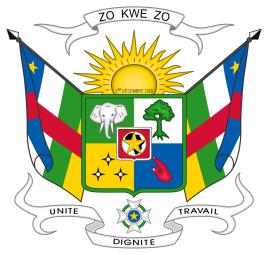

Central African Republic (French: La République Centrafricaine, English: Central African Republic), referred to as central Africa, is a land locked country in the central part of the African continent. Central Africa covers an area of 623000 square kilometers. It borders Sudan and South Sudan in the East, Congo and D.R.Congo in the south, Cameroon in the West and Chad in the north. There are 32 large and small tribes in the country, mainly including Baya, Banda, Sango and Mangia. The official language is French, and Sango is widely used.
As early as the 9th and 16th centuries, three tribal kingdoms, Bangassou, Lafayette and Zamio, were established on the land of Central Africa. It became a French colony in 1891. In 1910, it was designated as the French Equatorial African territory, known as Ubangi-Shari. The autonomous republic was established on December 1, 1958. On August 13, 1960, independence was declared and the Central African Republic was established. The Central African Empire was established in December 1976.
In September 1979, the monarchy was abolished and the Republic was restored. The multi-party system was implemented in 1991. In September 1993, Ange-Felix PATASSE was elected president in the first multi-party election. In March 2003, former chief of general staff Francois Bozize Yang guweng led his troops to capture Bangui, overthrow the Patasse regime, and became president the next day. He was elected president in 2005 and was elected president again in 2011. In March 2013, Bozize regime was overthrown by the Central African anti government armed alliance "Seleka".
